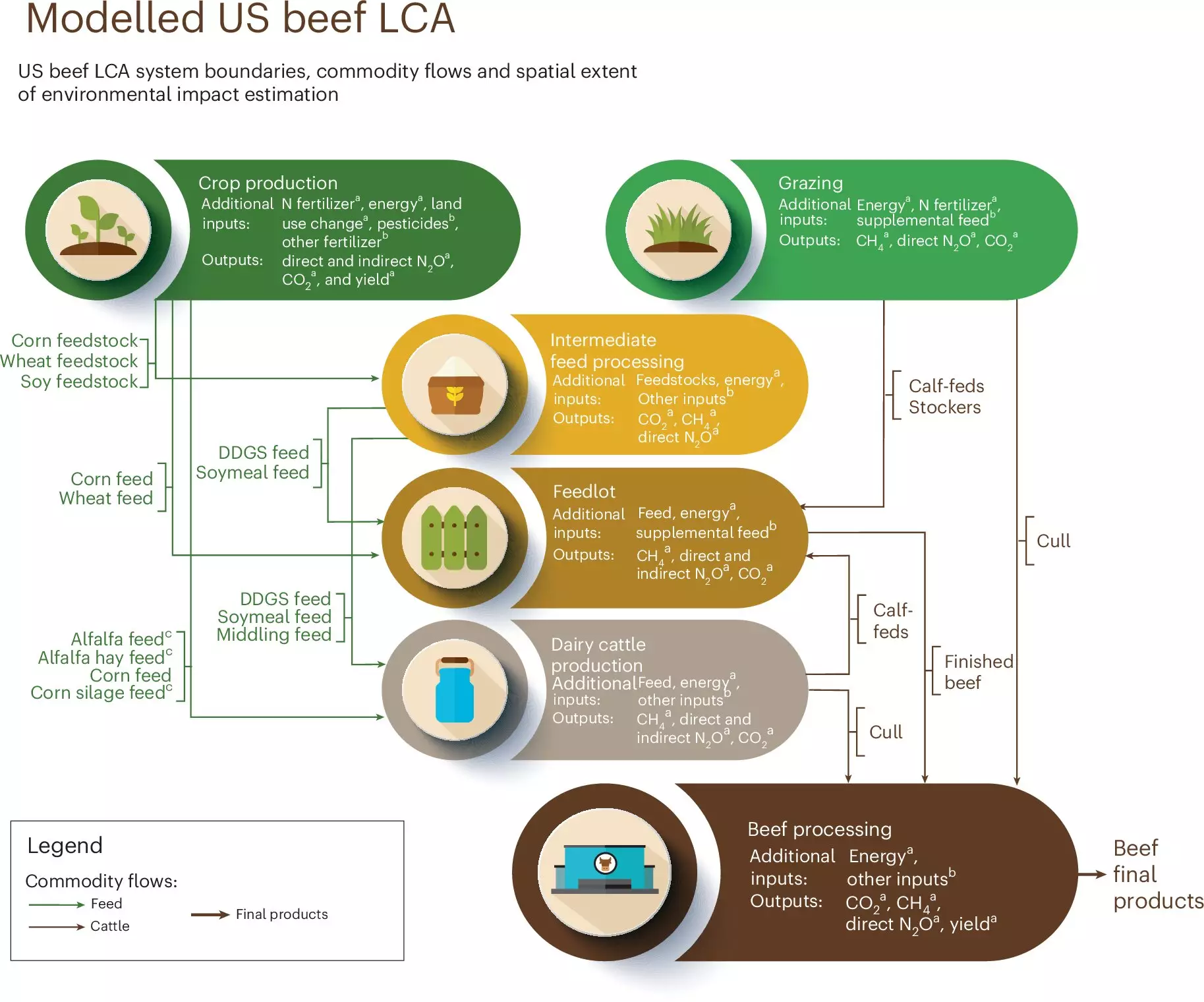Climate change has increasingly become a focal point of global discussions, particularly concerning the sources and impacts of greenhouse gases (GHGs). Among the various sectors contributing to climate change, agriculture, and specifically the beef industry, stands out as a significant player. Since the mid-20th century, human activity has propelled GHG emissions, with the U.S. beef sector alone accounting for approximately 3.3% of the national total. This figure underscores the urgent need for effective strategies to curtail emissions from this complex supply chain.
The beef supply chain is notoriously intricate, involving various stages from feed production to processing. Each segment introduces its own set of emissions, making it difficult for stakeholders to pinpoint where reductions can be most effectively applied. Despite admirable efforts and commitments towards lowering emissions over the past five decades, the industry’s complexity presents a continual challenge.
Recent investigations seek to crystallize actionable approaches that the beef sector can employ to achieve substantial GHG emissions reductions. The U.S. beef industry, as revealed by research, emits nearly 258 million metric tons of GHGs annually. A closer look at the geographic distribution of these emissions highlights critical areas such as the Great Plains and Midwest, where emissions from concentrated feedlots primarily occur. Conversely, grazing-related emissions are spread more uniformly across the Western states, indicating distinct regional challenges and opportunities.
A new study published in *Nature Food*, conducted by the University of Minnesota’s Institute on the Environment (IonE) and The Nature Conservancy, introduces groundbreaking findings on reducing emissions by up to 30% within the U.S. beef sector. The research pioneers the first county-level, location-specific analysis that identifies emission hotspots, offering tailored recommendations for different regions.
Researchers examined a total of 42 alternative practices that can be implemented across the beef supply chain. Among these strategies are innovative methods like cover cropping, the introduction of feed additives to improve livestock efficiency, and enhanced energy management techniques. By analyzing the unique geographic features and characteristics of various regions, this research provides targeted recommendations that could guide beef producers toward meaningful emission reductions.
One of the notable outcomes of the research was the identification of region-specific opportunities for reducing carbon emissions and enhancing carbon sequestration in agricultural practices. For instance, in the Southeast, researchers suggested the strategic incorporation of trees into pasturelands, which can significantly boost carbon storage capabilities within grazing areas. In contrast, the Northern Great Plains would benefit primarily from efforts aimed at restoring degraded wetlands, which also serves the dual purpose of improving overall land health.
These region-oriented strategies echo the sentiment that sustainability must integrate seamlessly into the operational practices of the beef industry. According to Kris Johnson, a co-author and director of The Nature Conservancy’s North America Agriculture program, adopting sustainable practices is not only imperative for environmental health, but is also crucial for ensuring long-term economic stability for ranchers and farming communities alike.
The challenge posed by GHG emissions in the U.S. beef industry demands a multifaceted approach that incorporates innovative practices and regional adaptations. By leveraging the insights from pioneering research and collaborating across the supply chain, stakeholders can implement meaningful changes that improve environmental outcomes while satisfying consumer expectations.
This evolving landscape presents an opportunity for the beef industry to transition towards more sustainable operations, thereby enhancing transparency and accountability. As the industry embraces these critical changes, the road ahead holds promise for a more sustainable future, characterized by both economic viability and a healthier planet for generations to come.

